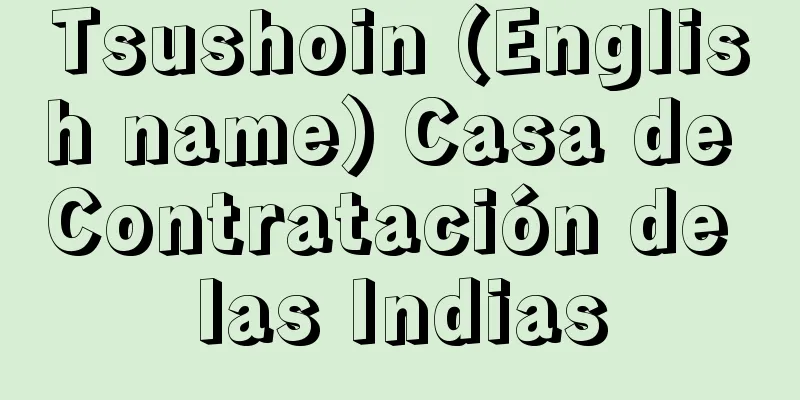Rice field geta - Tageta

|
Footwear worn while working in rice fields. They are broadly divided into two types: rice clogs, worn to avoid getting stuck in wet fields during harvesting, and oashi, used to step on seedling beds and the main fields before rice planting. The former are called namba, kanjiki, yachigeta, etc., and include types that use large rectangular boards long or wide, types that use geta attached to round frames made of bent tree branches or frames made of boards, and types that use bamboo or wood woven like a blind. The latter are widely called oashi, and are large, thin clogs attached to a wooden frame, operated by holding a rope, and used to walk evenly over the surface of the rice field, kneading the mud into small pieces, and to step on green manure and rice stubbles in the mud to adjust the surface of the field. The distinction between the two types of rice clogs was already seen in the Yayoi period, suggesting that their origins are ancient. Daiashi is used in the early New Year celebrations to pray for a good harvest, and is recorded in the "Annual Events of the Imperial Grand Shrine of Ise" compiled in 1192 (Kenkyu 3). It is performed in various rice field activities thought to have originated in the Middle Ages. In addition to using Daiashi, there is also "sofumin" (treading with bare feet) and "treading with horses" for treading rice fields, and there is a notable connection to the toukou (treading cultivation) practice that is widespread in Southeast Asia. [Tadashi Kinoshita] "Tetsuo Ushioda, 'The Evolution of Rice Clogs' (included in 'Folk Implements I', 1969, Keiyusha)" ▽ "The Origin and Tradition of Japanese Agricultural Techniques,' by Tadashi Kinoshita (1985, Yuzankaku Publishing)" Source: Shogakukan Encyclopedia Nipponica About Encyclopedia Nipponica Information | Legend |
|
水田の作業に着用される履き物。稲刈りなどの際、湿田にはまらぬために履く田下駄と、苗代や田植前の本田(ほんでん)の代踏(しろふ)みに使われる大足(おおあし)の2種に大別される。前者はナンバ、カンジキ、ヤチゲタなどの名でよばれ、長方形の大きい板を縦長または横長に使う型のほか、木の枝を曲げた丸い枠や板を組んだ枠に下駄を取り付けた型、竹や木を簾(すだれ)状に編んだ型などがある。後者は広くオオアシの名でよばれ、細長い大きな下駄を木の枠に取り付け、取り縄を持って操作し、田面をまんべんなく歩いて泥を細かく練り、緑肥や稲株を泥中に踏み込み、代の表面を調整するのに用いられる。2種の田下駄の別はすでに弥生(やよい)時代にみられ、その起源の古いことが察せられる。大足は年の初めに豊穣(ほうじょう)を祈る予祝行事のなかでも用いられ、1192年(建久3)編の『皇大神宮年中行事』に記され、中世に起源をもつとみられる各地の田遊びでその所作がなされている。水田の代踏みには、大足を用いるほか、人の素足による「素踏み」、馬による「踏ませ」があり、東南アジアに広がる踏耕(とうこう)との関連が注目される。 [木下 忠] 『潮田鉄雄『田下駄の変遷』(『民具論集I』所収・1969・慶友社)』▽『木下忠著『日本農耕技術の起源と伝統』(1985・雄山閣出版)』 出典 小学館 日本大百科全書(ニッポニカ)日本大百科全書(ニッポニカ)について 情報 | 凡例 |
Recommend
Turkmen people - Turkmen (English spelling)
The name of the Turkic ethnic group in Central and...
Act of government - Touchikoi (English spelling) Regierungsakt; acte de gouvernement
Even if legal judgment is possible, acts that are ...
Sexual anesthesia
This condition is generally used to describe wome...
Sklabēnoi (English spelling)
...The Venedi may be regarded as a general term f...
Scarlet lychnis (English spelling) scarletlychnis
...The flowers are about 3cm in diameter and redd...
Leibniz-Wolffische Schule
A group of philosophers who advocated Leibniz'...
River hunting - Kawagari
The word "kawagari" had two different me...
Hypoiodous acid (hypoiodous acid)
Chemical formula: HIO. It exists only as an aqueou...
Inspection and investigation - Sashinkou
A Chinese poet from the early Qing dynasty. His p...
Eryops (English spelling)
A genus of primitive amphibians that lived in Nort...
Corynebacterium
… [Motoyoshi Shigekazu] [Bacterial plant diseases...
Chlorine water - Enso Sui
Water saturated with chlorine. Chlorine dissolves...
Otomo no Komaro
Year of death: Tenpyo Houji 1.7 (757) Year of birt...
Absorption heat pump
...In a vapor compression heat pump, the refriger...
Murayama Touan
Year of death: 1619.12.1 (Genna 5.10.26) Year of b...









